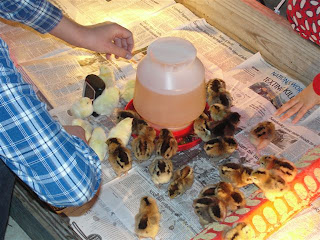Family takes care of family....
Friends take care of friends....
I have always taken care of friends. If I had the means and had what you needed...it quickly was gotten to my friends and freely "given". From high school to college, my friends were my priority.
I'm now a mom and we have been so blessed to call many elderly people "friends". My two oldest grew up looking "up" under Mrs. Thorn's quilt rack. She would quilt a queen sized quilt, COMPLETELY by hand, in four weeks. Yes, she completed twelve a year. And each day, my boys checked on her and brought her mail into her. Often, she would be taking a "little" nap when they quietly put the mail on her dining room table. She invested time in my boys. She taught them about quilting, but more importantly, she taught them about life and serving our Savior.
Then there was "Bob". We had him over year after year for Thanksgiving. And we NEVER knew how many people would be coming for Thanksgiving which always made it fun and exciting! The second time Bob joined our family he called Thanksgiving morning and asked if he could bring some family. I asked how many and I think it was 6 extra. I took a "deep" breathe and said...bring them over. That was the first of many Thanksgivings with Bob's family. We honestly never knew how many would come on those Thursdays, but we always had left overs and plenty of seats. It was a few Thanksgivings ago that we were driving down the road and I asked each of the boys to complete the following sentence: It would not be Thanksgiving without ______________. I wanted to make sure that what ever would make Thanksgiving special for each of my boys would happen because these are special times....special memories. My second oldest said, "It would not be Thanksgiving without Mr. McClellan." I assured him that would not be a problem as I had already called Bob and left a message on his machine. Not that we needed to because he had a "standing invitation" for dinner every Tuesday night and every year at Thanksgiving. But as I have learned, it is always nice to "hear the invitation". I'm glad I called and left the message on the machine that year. You see, Bob passed away the Sunday before Thanksgiving. The family was having a small "family" funeral since Bob was being buried on his property. They checked his answering machine and heard my message and called to let us know that Bob had passed away. His funeral was the day before Thanksgiving. We did not have Thanksgiving that year.
We often talk about Bob and Mrs. Thorn. They invested in my children and my children will be better citizens thanks to them "investing" in my family.
Recently we had another friend in need. My oldest left summer camp to help. My husband and second oldest had already packed and made plans to travel the 500 miles one way to help finish a wheel chair ramp. Unfortunately, that late afternoon, the friend they had planned on helping passed away. What a shock! So instead, I took my two oldest over and they had their tools. They were going to finish the ramp that needed finishing and whatever "else" needed to be done. Those plans changed once we arrived and we helped in other ways. We did what needed to be done...not what we wanted to do. We put our friend's needs and feelings above ours. You see...that is what friends do.
After we returned home, my oldest played a song for me. He said, "mama, this is us". It does not matter the cost nor the distance, if we have friends in need, we are going to help. I told him he was correct. There is no excuse...take care of your friends...put their needs FIRST...that is what we are supposed to do.
So here are some lyrics of the song:
You find out who your friends are
Somebody's gonna drop everything
Run out and crank up their car
Hit the gas, get there fast
Never stop to think 'what's in it for me?' or 'it's way too far'
They just show on up with their big old heart
You find out who your friends are....
The song is by Tracy Lawrence and titled, Find Out Who Your Friends Are. When you open the link, you will see Artist, Song, Album. By "Song", you will see a play arrow. Just hit that and you will hear the song.
Find Out Who Your Friends Are
Take a moment and listen to this song. And think about your friends. Give them a call today...tell them hello...
check to make sure they are doing okay...
and if they need anything...
go do what needs "doing"...
just because...
that is what friends do.






























